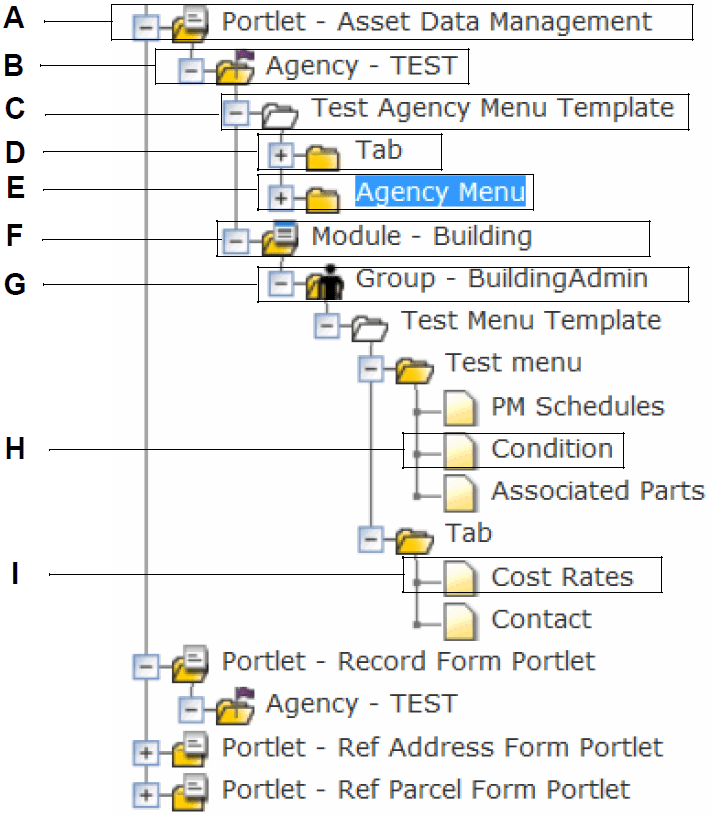Menu navigation tree
The Civic Platform Menu Navigation page uses a folder structure called the Menu Navigation Tree to configure, create, and display custom menus.
Menu navigation tree example
To view the configurations at different levels, select the plus (+) or minus (-) sign within the menu navigation tree. Right-clicking a tree node in the menu navigation tree displays a menu of all the operations you can perform with the node. For example, if you right-click a module name, you can add groups or menu templates for the module. You can also delete the module settings.
| # | Name | Description |
|---|---|---|
| A | The Portlet folder | Four portlet types can contain customized menus, custom drop-down menu and custom tabs: Asset Data Management (asset details portlet), Record Form Portlet (record details portlet), Ref Address Form Portlet, and Ref Parcel Form Portlet. |
| B | The Agency folder | You can add agency-level menu template, or add modules and groups and then configure module-level and group-level templates in this folder. |
| C | The Template folder | You can create template menus for the entire agency or for individual modules and groups. You can add custom menus or tabs with the right-click options, or open a template menu and then change its settings. |
| D | The Tab folder | You can add a tab menu and create tabs within it. Only the selected tabs display in the details portlet when users open the portlet. |
| E | Navigation Menus | Navigation menus are where you create or remove custom menus. You can add, cut, copy, paste, and delete a menu with the right-click options. |
| F | Module folders | You can create module folders and define module-level custom menu items and custom tab. |
| G | Group folders | You can create group folders and define custom menu items and custom tab that work for a specific group. |
| H | Menu items | Items are the daily tasks that a user performs. There can be a minimum of one menu item per menu, and a maximum of 16 items per menu. |
| I | Tab Items | If you define a tab and assign tab items to the tab, when users open the details portlet (see A), only selected tab items display in the details portlet. |
